
String Art Generator
String Art Generator by Yiran is a grasshopper plugin which generates a string art sequence based on an input image. You can
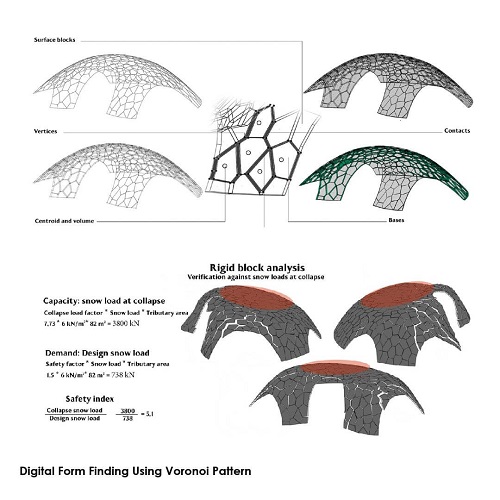
Digital Form Finding Using Voronoi Pattern
The role of the 3D physical model in optimized shape research is the base of form finding strategies. The 3D model is always used to simulate processes, and to define optimized complex shapes.
 Starting from Gaudí’s funicular models, Frei Otto’s chain models and reversed Isler’s hanging membranes, advances in structurally optimized shape design derive from the widespread availability of digital form finding tools that make it possible to test several research directions.
Starting from Gaudí’s funicular models, Frei Otto’s chain models and reversed Isler’s hanging membranes, advances in structurally optimized shape design derive from the widespread availability of digital form finding tools that make it possible to test several research directions.
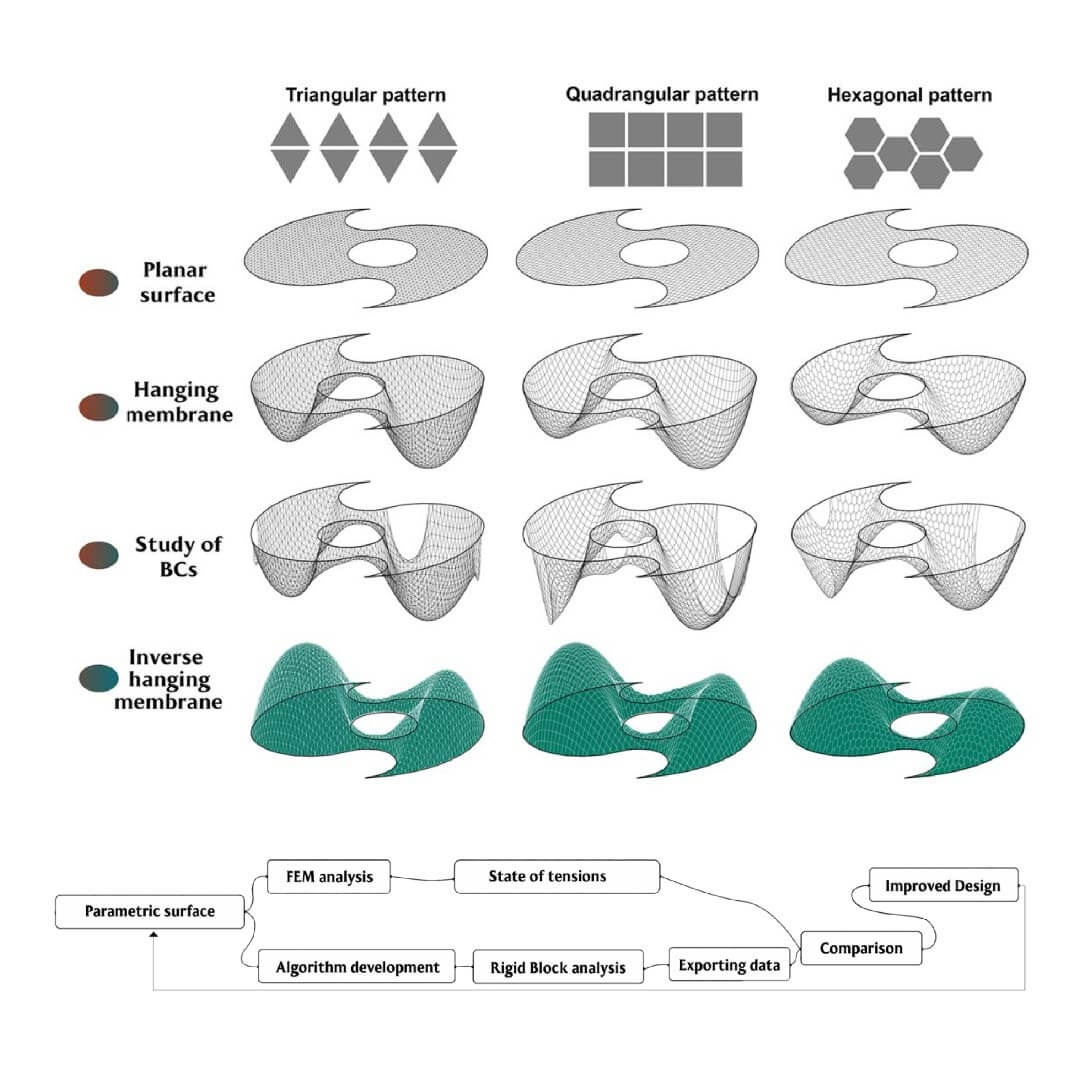 Through an interdisciplinary collaboration between computer science and architecture, and architects and engineers, the goal of this paper is to test and evaluate different approaches based on computational tools useful for efficient form finding in the design of 3D structural systems by means of an iterative process.
Through an interdisciplinary collaboration between computer science and architecture, and architects and engineers, the goal of this paper is to test and evaluate different approaches based on computational tools useful for efficient form finding in the design of 3D structural systems by means of an iterative process.
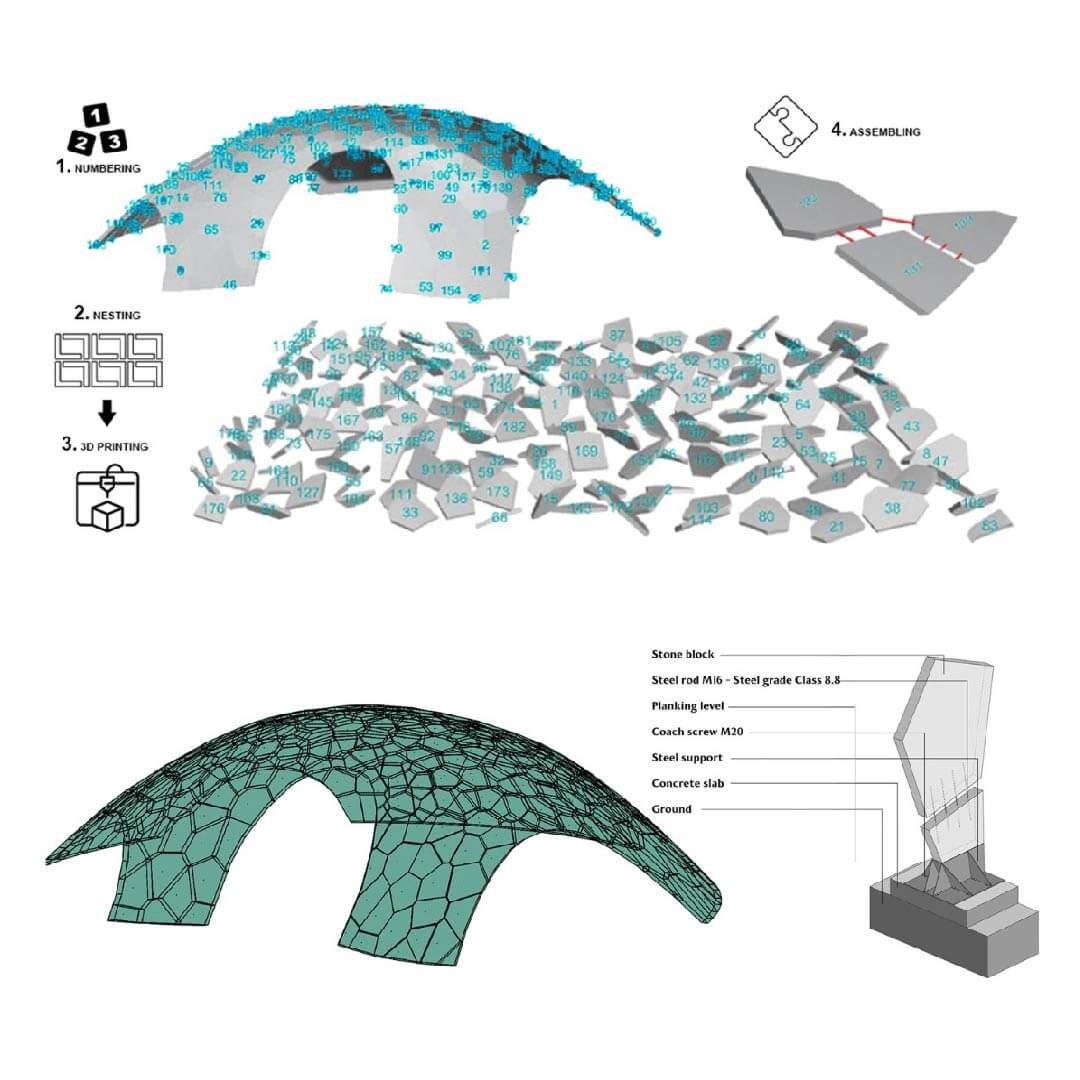 This research work is aimed at designing an inverse hanging shape subdivided in polygonal voussoirs (using Voronoi pattern) by relaxing a planar discrete and elastic system, loaded in each point and anchored along its boundary.
This research work is aimed at designing an inverse hanging shape subdivided in polygonal voussoirs (using Voronoi pattern) by relaxing a planar discrete and elastic system, loaded in each point and anchored along its boundary.
The workflow involves three main steps: shaping, discretization (from paneling to digital stereotomy), and structural analysis.
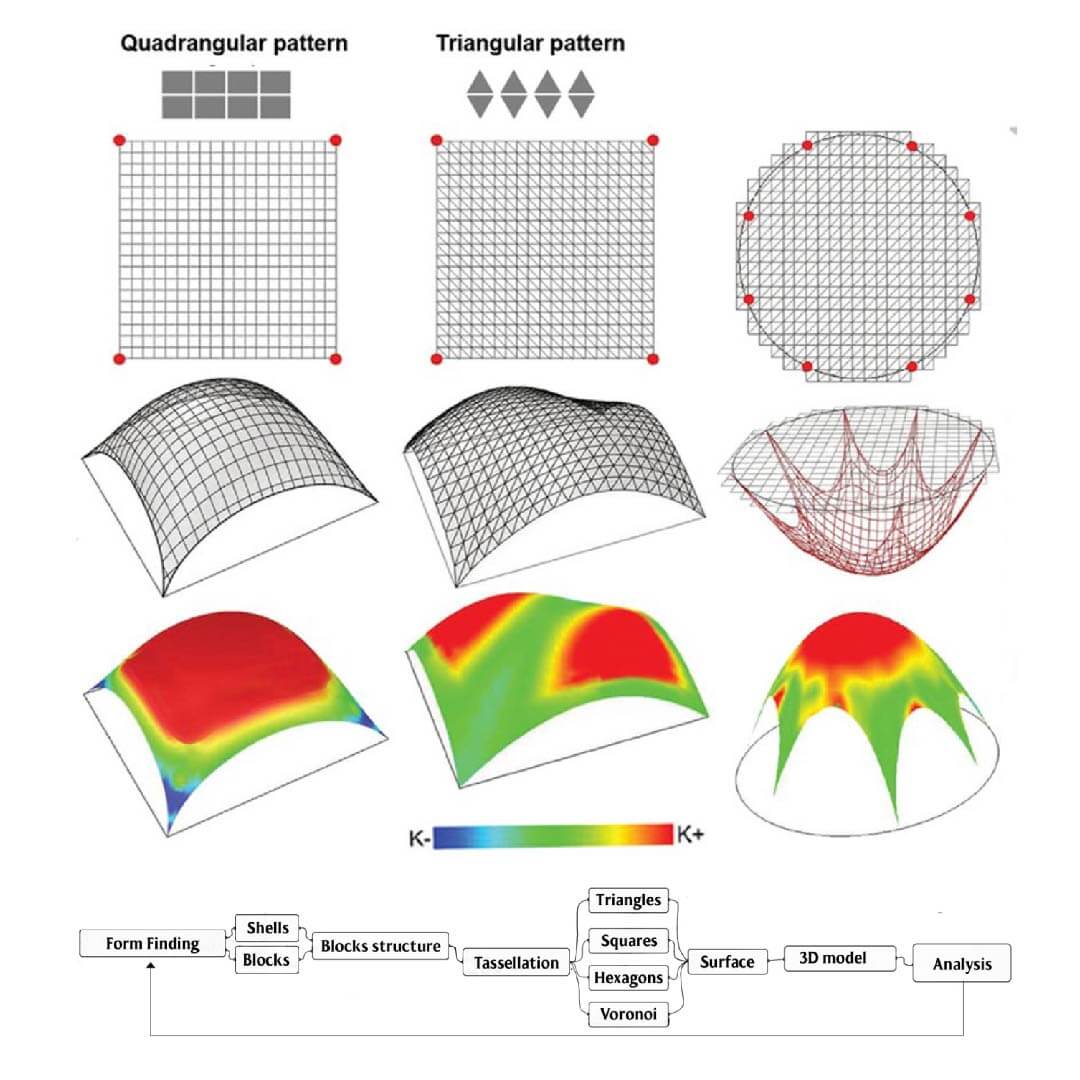 Modeling and discretization are managed according to a Visual Programming Language (VPL) algorithmic generative approach (Grasshopper, Rhino) using a specific add-on to simulate forces and anchoring conditions and to model voussoirs (Rippmann et al. 2011b: 183) starting from Voronoi cells (mesh).
Modeling and discretization are managed according to a Visual Programming Language (VPL) algorithmic generative approach (Grasshopper, Rhino) using a specific add-on to simulate forces and anchoring conditions and to model voussoirs (Rippmann et al. 2011b: 183) starting from Voronoi cells (mesh).
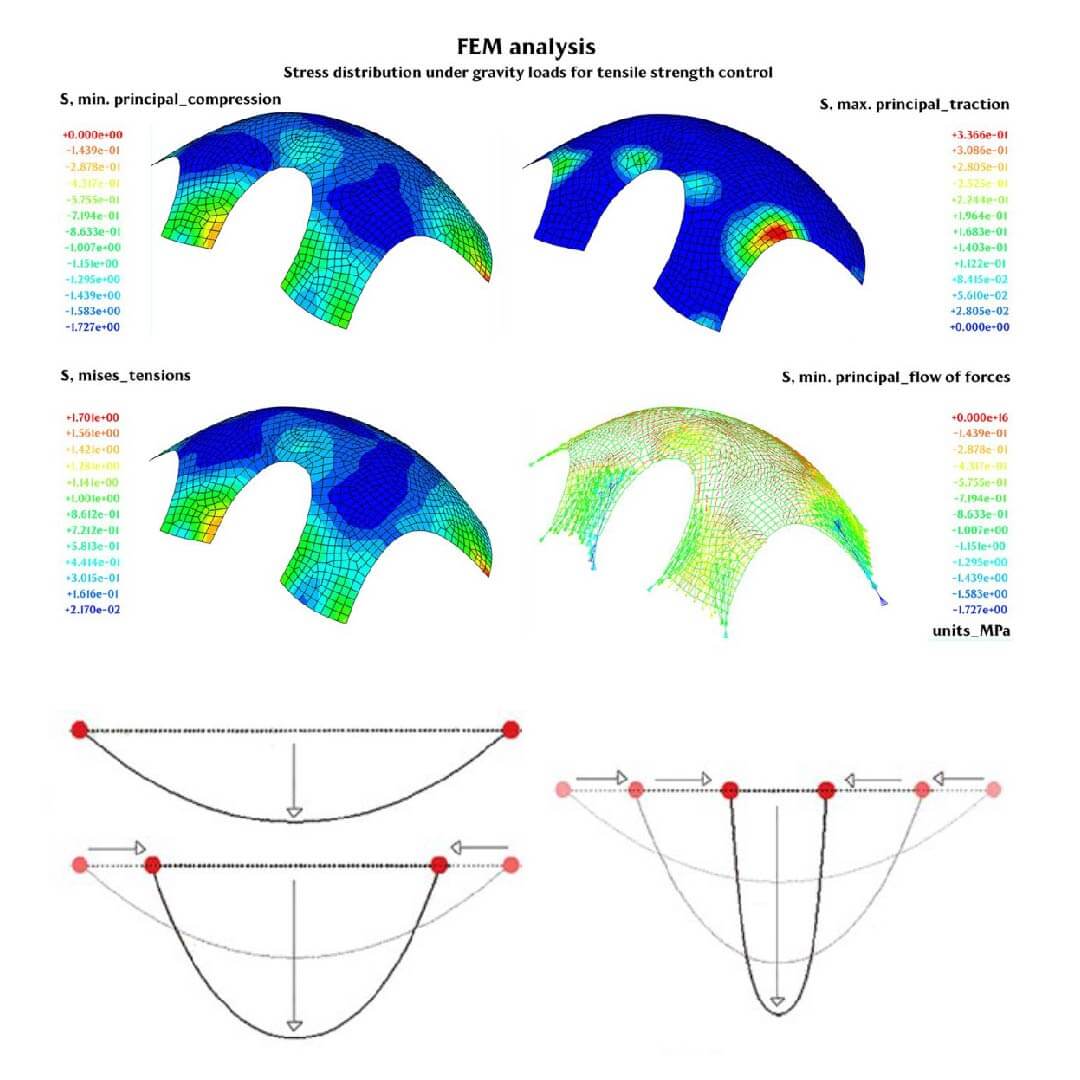 These models are dynamic systems (Sulpizio et al. 2020: 30) that can be modified in real-time by changing special parameters: geometric pattern, boundary conditions, physical forces, anchor system, loads, materials, stress state.
These models are dynamic systems (Sulpizio et al. 2020: 30) that can be modified in real-time by changing special parameters: geometric pattern, boundary conditions, physical forces, anchor system, loads, materials, stress state.
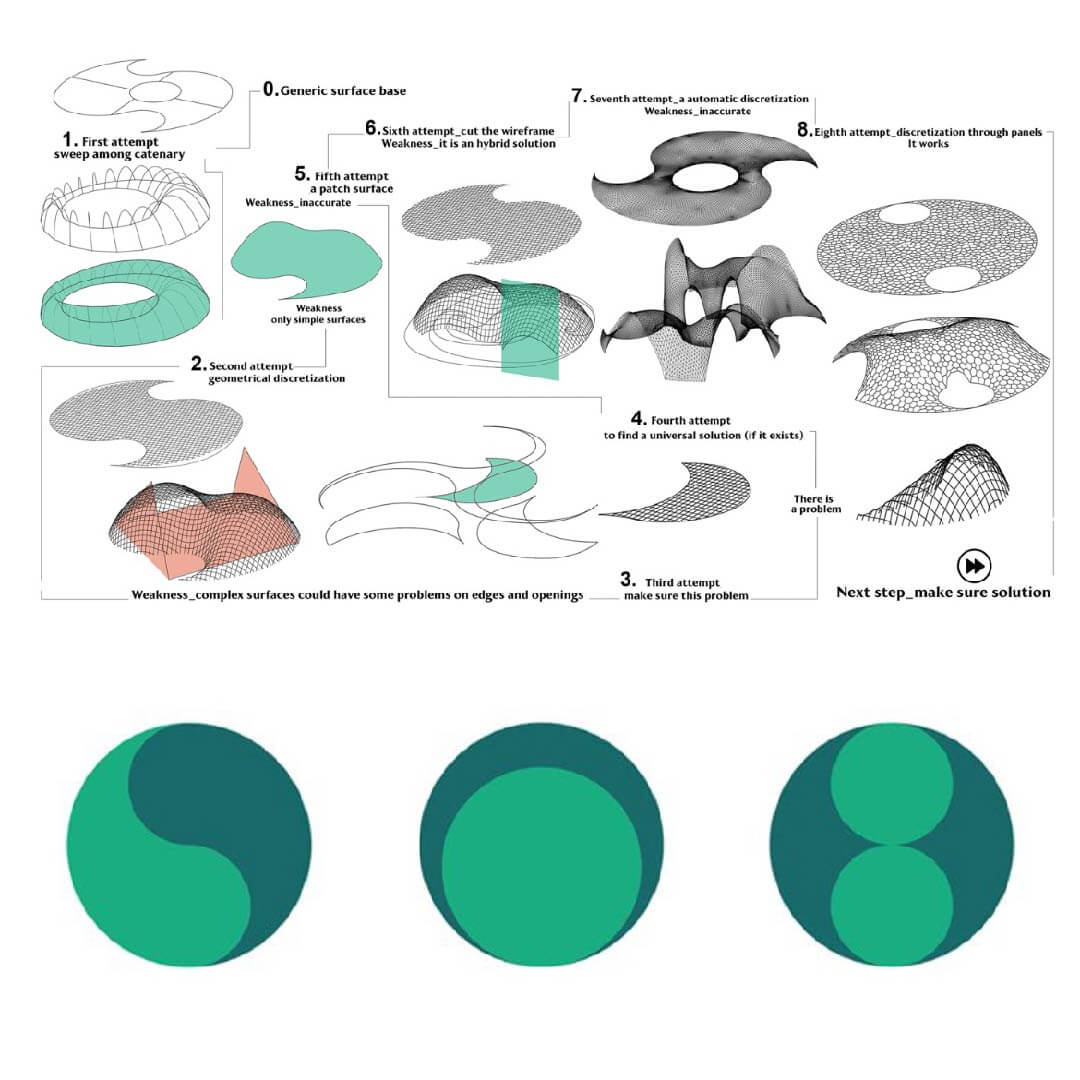 In our research we are testing a design process for the digital manufacturing of an optimized surface using Voronoi blocks.
In our research we are testing a design process for the digital manufacturing of an optimized surface using Voronoi blocks.
We had to deal with two main questions: the geometric question linked to stereotomy and the structural question. The main topic is how to manufacture a continuous surface that looks like a thin shell structure using blocks.
 Our interdisciplinary research is a work in progress that allows us to compare different points of view. The main goal is to test new design processes to improve the use of algorithmic generative modeling tools able to define a structurally optimized shape.
Our interdisciplinary research is a work in progress that allows us to compare different points of view. The main goal is to test new design processes to improve the use of algorithmic generative modeling tools able to define a structurally optimized shape.
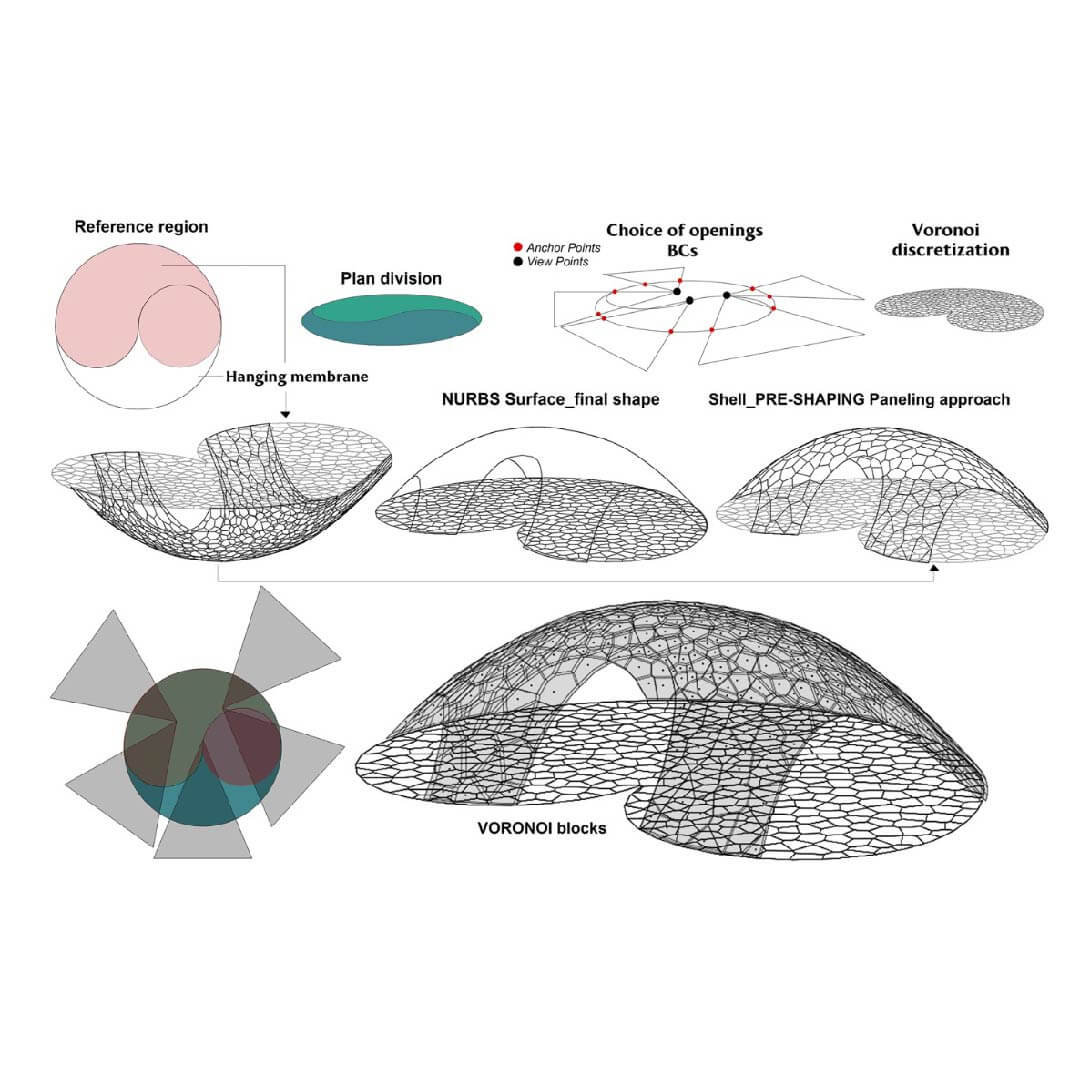 In this case, modeling allows designers to simulate structural behavior and to look for the best solution using a generative approach.
In this case, modeling allows designers to simulate structural behavior and to look for the best solution using a generative approach.
Experimental investigations should be carried out to validate the proposed modeling approach and, importantly, the construction phase.
 These tests could be also used to calibrate the numerical model of the steel rods proposed in the construction phase, which have been neglected for safety reasons in the finite element and rigid block analysis presented in this work.
These tests could be also used to calibrate the numerical model of the steel rods proposed in the construction phase, which have been neglected for safety reasons in the finite element and rigid block analysis presented in this work.

String Art Generator by Yiran is a grasshopper plugin which generates a string art sequence based on an input image. You can

This paper by Alessandro Liuti, Sofia Colabella, and Alberto Pugnale, presents the construction of Airshell, a small timber gridshell prototype erected by employing a pneumatic formwork.

In this paper by Gregory Charles Quinn, Chris J K Williams, and Christoph Gengnagel, a detailed comparison is carried out between established as well as novel erection methods for strained grid shells by means of FE simulations and a 3D-scanned scaled physical model in order to evaluate key performance criteria such as bending stresses during erection and the distance between shell nodes and their spatial target geometry.

In this paper by Frederic Tayeb, Olivier Baverel, Jean-François Caron, Lionel du Peloux, ductility aspects of a light-weight composite gridshell are developed.
Parametric Ideas for Architects @2025